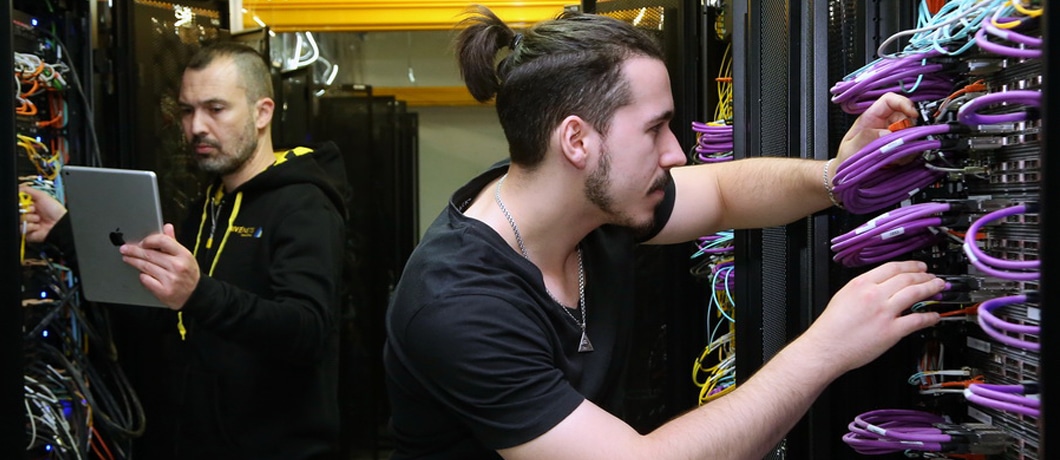To meet this need, some of the leading SPs like Telefonica, Vodafone, AT&T or Rakuten suggest that the network disaggregation model is their best option for their radio access (RAN), edge and even their core networks. We could not agree more. Paying attention to this approach and contrary to most NOS vendors, DriveNets serves as a single owner for the disaggregated solution, providing all aspects of deployment and support. DriveNets developed the highest scale, carrier-grade disaggregated network solution available today, and is working with integrators to ensure that operations run optimally and are managed efficiently within the service provider network. This can effectively address service providers’ need for complete lifecycle management of the disaggregated network model and specific customization – from white box sourcing and preparation, through installation, to provisioning and support. So what’s it like deploying and running a disaggregated network solution? Let’s dive into the details.
End-to End Lifecycle Management
CSPs need to ensure end-to-end lifecycle management of the network rollout – with a consistent deployment strategy across the entire network. The deployment process for disaggregated network solutions is usually supported by a value-added reseller or integrator and includes:- Initial design, architecture and roadmap (both for the software and physical designs and their deployment model)
- Solution test and validation
- Production optimization and readiness
- Sourcing and logistics management (hardware inventory, sparing, warehouse, transportation)
- System integration, test and validation
- Site survey, field installation, base configuration, and turn-up
- Ongoing technical support including hardware repair, maintenance, tracking, and material replenishment and software support and upgrades
Efficient Technical Support
SPs need a single point of contact, with the vendor handling the first call triage and turning to an integrator for any hardware-related issue or to handle the issue directly if the issue is software-related. SPs need an efficient process, like using a single cloud ticketing system between the CSP, the ODM and software vendors. Multiple support tiers need to be available to provide fast service restoration while complying to carrier-grade SLAs, including:- Tier 1 – assessment, SLA ownership, RMA, how-to’s and spares (Hardware-focused tier)
- Tier 2 – hardware configuration, trouble isolation/ service restoration (Software)
- Tier 3 – Root Cause Analysis (RCA), hardware RCA/repair/remote support, ODM/OEM management
- Tier 4 – resolution certification and software updates (Software-focused tier)
Providing Greater Transparency
Tracking of historical information in incumbent routers typically has 7% of undocumented failure (according to KGPCo), which can complicate future planning. The disaggregated model solves this problem by providing full transparency. An orchestration solution as part of the disaggregated model needs to offer zero-touch provisioning (ZTP) and Life Cycle Management (LCM) that provides deep visibility and analytics – supporting planning processes and ultimately ensuring that the entire solution meets top performance and efficiency targets. Security is also improved, as the greater transparency enables better protection – compared with the “black box” of incumbent solutions. Finally, trending and predictive models associated with hardware and software historical data points will pave the way to proactive and predictive maintenance to increase system availability. With DriveNets taking this approach, the result is the time to turn-up cycle is reduced by 50 percent – due to the automation, the simplification of the supply chain, and the openness of DriveNets’ service provider routing solution.Operational Model for Network Disaggregation
Network disaggregation means that CSPs can choose their vendors to build a best-of-breed solution that includes silicon, white boxes, and software. But network disaggregation requires a new operational model that must deliver the same or greater efficiency as incumbent routing solutions. The ecosystem involved around a disaggregated model provides a comprehensive solution that supports the critical steps of network rollouts and maintenance. Providing a single point of contact for any support issue, just like in the traditional vendor model provides CSPs direct access to data that may never before have been shared. The open disaggregated networking model combined with a support model as part of the overall offering provides substantial operational innovations and savings – including 50% reduction in source to turn-up cycle time, and a streamlined integration process that avoids gaps that could lead to functional inefficiencies.Download White Paper
Introducing DriveNets Network Cloud




